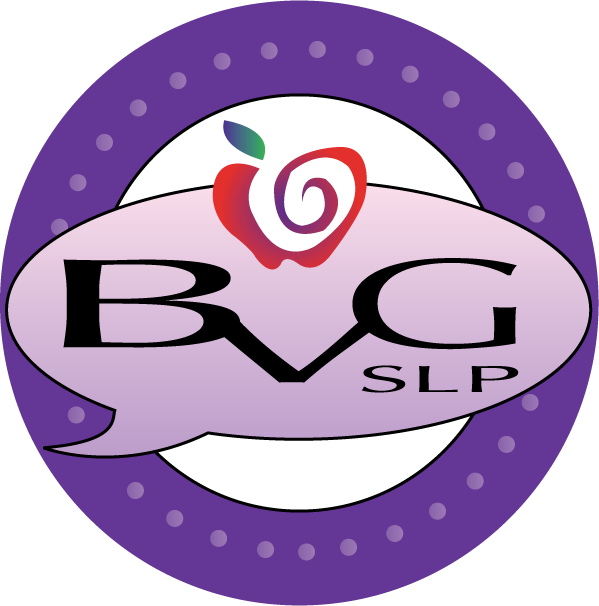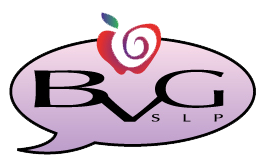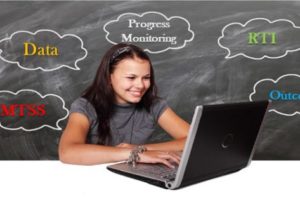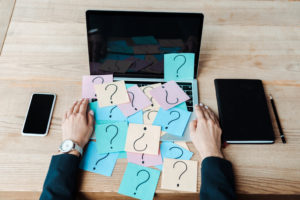Today we are going to be discussing ways to keep your teletherapy sessions fun and engaging without the need for fancy materials. As much as I LOVE to create resources, I know for sure that there are several tried and true things you can do with your students with minimal out of pocket costs. With each new blog post, I really want to continue to remind you to stay up to date with ASHA’s position and the most recent information (as of Friday, April 10th at 6:00 p.m – check back regularly for new updates) www.asha.org/About/Coronavirus-Updates.
First and foremost always take care of yourselves and your families as we continue to navigate through this unfamiliar terrain. It has definitely been a challenge but please know that we will get through this together. Supporting one another is what we do best as SLPs and educators. I want to share what I have learned along this journey to hopefully make your transition a little bit easier.
This is my fourth year as a teletherapist and I have tried SO many things with my students. I personally love for my sessions to be dynamic and multi-dimensional. I would like to provide you with FIVE options to keep your students motivated that do NOT require you to use a digital resource. Digital resources are great and I do use them EVERYDAY in my teletherapy sessions however, they are not the only thing that my students and I are using throughout the session.

SHOW N TELL: This is such an easy activity that is extremely effective for me during my teletherapy sessions. My sessions are generally structured around our warm-up being a few minutes for students to share something with me. It can either be a favorite toy or anything they want to share. This is great for expressive language because students really enjoy talking about their favorite things. It gives them a sense of familiarity which is a good boost in confidence. My students have come to understand that we only spend a few minutes at the start of our session sharing and they don’t just show me the item. They have to talk about it, describe it, tell me who they play with, how they play with the item, when was the last time they played with it, where did they get it from, why is it one of their favorite toys, etc. As you can see, we work through so many “wh” questions with this activity. As they are talking about it, I model grammatically correct complete sentences using clear articulated speech. I also, on occasion, will bring an item to share with my students and I have them infer/guess what it is as I provide them with clues. They really enjoy this and it is a very motivating way to start your sessions.

FINGER PUPPETS: I love incorporating puppets into my sessions and finger puppets are very convenient and easy to grab and share. I keep several finger puppets near my desk and break them out spontaneously and sporadically. If we are working on expanding sentences, I may put on my five finger puppets and provide a visual cue as we practice the five guiding questions to expand their sentences (who, is doing what, where, when, and why). I use them frequently to address comparing and contrasting. Putting two puppets on my fingers and allowing students to tell me how the are the same and how they are different is a great precursor to a more complex lesson. For my younger students, I may use my hand puppets to put on a fun puppet show or to help us address their speech/language targets.

BOOKS: Literacy really is my JAM and a good book goes a VERY long way in therapy. I love incorporating books into my sessions. Although digital books are easy to use, a traditional book works great too! I do not have a document camera and reading actual books can easily be accomplished with my students. Remember it doesn’t have to be fancy to be effective. Read the book the way you normally would face to face. Pause frequently to ask questions, talk about the story elements, describe the pictures, etc. When reading an actual book with my students, I generally will make my video larger to make it easier for them to see the pictures. Before, during and after reading each page I hold the book up close to the camera so they can see the pictures. We answer questions, talk about the actions in the story, identify the story elements, and practice retelling the story.

DRAW A PICTURE: This is probably one of the most effective ways to get students excited and motivated when executed correctly. I love assigning students the task of drawing me a picture. It could be a picture about a story we read together during our session, it could be a picture about a book that they read with their parents, or it could be a picture of something that they select. This is generally assigned as a homework assignment with specific instructions of being able to answer questions about the picture during our next session. When you have an involved parent, ask them to take a picture of their child’s artwork and send it to you via email. The part that makes this exciting is once you receive their drawing, print it out in color and have it ready for the student’s next session. When the student arrives for the session, start with a review of the homework. Let them show you their picture, describe it, talk about it, and answer questions about it. When they have finished, tell them they are an “excellent artist” and that you would LOVE to have their picture to put on your wall. Have them bring the picture as close to the camera as possible and then snap your fingers three times. On the third snap, hold up the copy of their artwork that you printed. This has worked like a charm every time I do it. My students think I know magic and they are so excited to see that I have their picture on my side of the screen and they still are holding their picture! I encourage you to try this and please let me know how it goes. 🙂

SURPRISE EGGS: This is a fun activity that has TONS of possibilities. Students really enjoy guessing games. Filling plastic eggs with a variety of small trinkets that either address target vocabulary or target sounds can be very motivating. Show your students the eggs one at a time and shake them up. Start describing what is in the egg. Depending on your students’ goals, you can do a wide variety of FUN things with surprise eggs. For instance, if your student is working on categories, select a category and put only items that belong to the category of that particular day in the eggs. Plastic eggs come in all different sizes and stocking up on them after Easter is a great way to fill your toolbox. You can even find them at Dollar Tree after Easter less than a dollar.
BONUS ADD ON! In addition to the five suggestions above, you can always bring silly glasses and fun headbands into your sessions to spice things up a bit. I LOVE HAVING FUN with my students because outcomes are better when they are motivated and engaged. I keep my glasses and headbands close and may use them as a reward at the end of a session. I may also pause my video for just a second and when I un-pause it have on something silly. I then act like I don’t know why they are pointing at me or laughing. This is a great way to get them to compare and contrast what I looked like before and after pausing my video.

Bottom line is there are so many possibilities for keeping your students motivated during your teletherapy sessions. Again, it does not have to be fancy to be effective. Focus on having FUN with your students WHILE addressing their speech and language targets. I hope you found these suggestions helpful and I would love to hear from you. If you have a suggestion that is not fancy but effective, comment below and tell me about it or if you prefer, email me at belinda@bvgslp.com.
DISCLAIMER: Please note that the content of this and all previous and future blog posts are for INFORMATIONAL PURPOSES ONLY. Be sure to abide by and follow your company’s policies and procedures. The information contained within are tips that have worked well for ME in my therapy/teletherapy room.







3 Comments
Leave your reply.